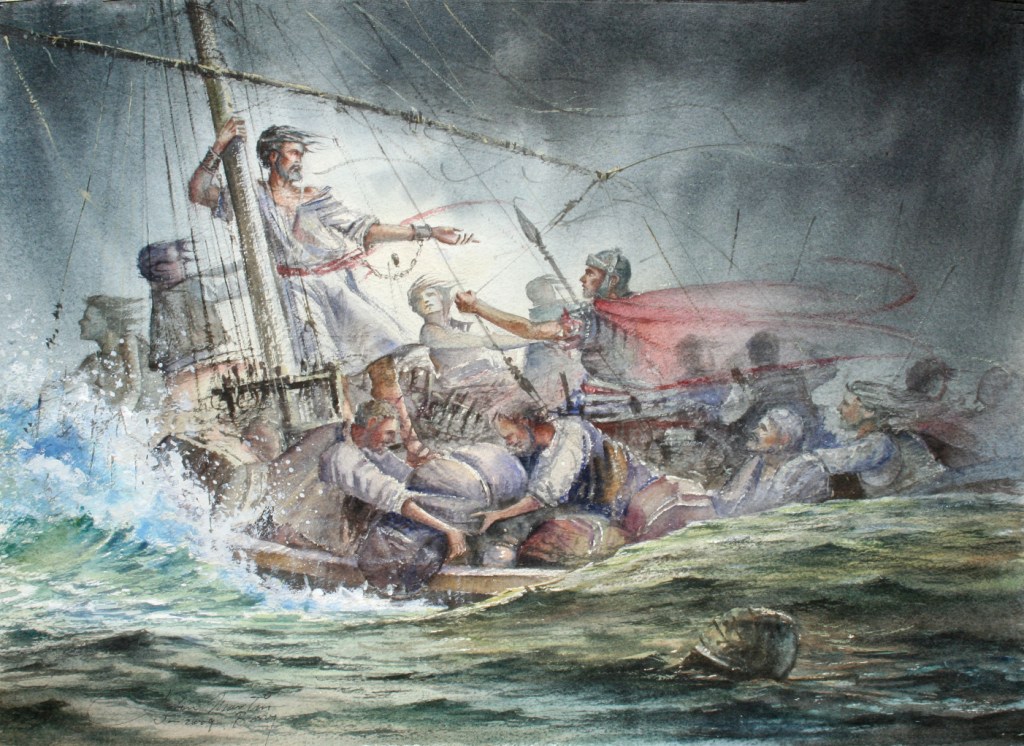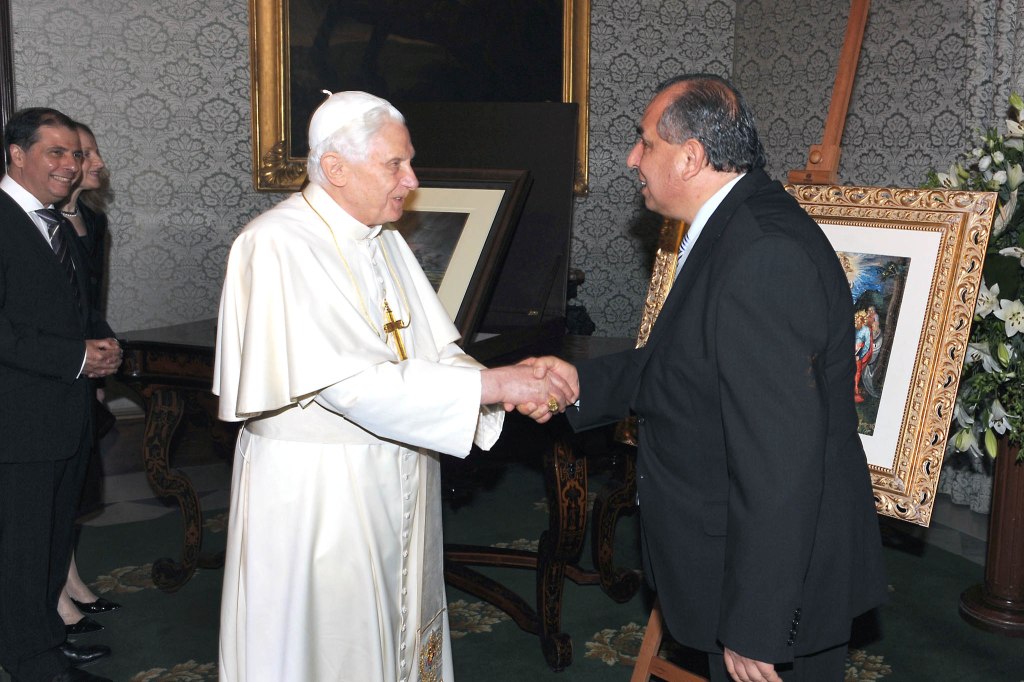An individual story of Art
by Marika Azzopardi
John Martin Borg recently made the news when one of his paintings became part of the Vatican collection after it was donated to Pope Benedict XVI by the President of Malta during the pope’s visit in April 2010. It is not the first John Martin Borg painting to make it into a prominent collection. Another forms part of the Royal Collection in London and was presented to the Queen and her consort in 1992. Borg’s works have graced the walls of varied international exhibition halls such as the UNESCO Head Quarters in Paris, the Mall Gallery in London, and then varied locations in Munich, Cologne, Stuttgart, Heidelberg, San Tropez, Paris, Tunisia, Dubai and Florida (USA). Apart of course, from the very many local exhibitions held in our Islands through the years.
Appreciated for his maritime scenes, landscapes and religious works alike, John Martin Borg is one of Malta’s most exponential contemporary artists. He was the student of a handful of Malta’s best artists, the likes of Harry Alden, Esprit Barthet and Vincent Apap. But what has Borg the artist got to do with this medical journal? John Martin Borg’s first profession was actually that of a pharmacist and medical representative. And in between all the innuendos of his career, he had, unbeknown even to himself, one very problematic condition to deal with.
“It was only two years ago, and I am now 57 years old, that I discovered I am dyslexic. I have always been, and that is the amazing thing – that nobody recognised this problem. In hindsight I am now working on revising and re-organising my thoughts about my past sufferings in this regard and it is an eye-opening experience which is helping me deal with all that I’ve been through.”
John Martin Borg speaks passionately about his life’s difficulties surrounding dyslexia and of how he recognised the condition in himself, thanks to his daughter’s daily reporting on the problems she encountered in her work as a facilitator working with children. “As she spoke I often recognised some of my own problems and voiced this openly. Of course my comments were quickly dismissed, but the doubts lingered on. Then I chanced upon meeting Ruth Falzon who lectures on dyslexia, and posed her the question – could I be dyslexic? She quickly fired some questions away and told me there and then. I was, I am and always have been.”
He explains how as a boy, he just hated school with a passion, and how he fought his problems of confusing and trying to memorise numbers, even whilst having an alarmingly good memory for things he really liked. His reading was painstakingly slow and reading Engish was a nightmare – he needed to read word by word and recalls being always last in class to finish copying off the blackboard. Skimming through his reading was never an option. He was marked as being lazy, ignorant, unable to concentrate and needless to say, he started to develop a very evident inferiority complex. “All through my fatherhood I could never bring myself to attend a parents’ day at my children’s school – not because I couldn’t care less, but because the day in itself brought back too many bad memories of my own experiences. I could never live up to my father’s expectations, although he was always a positive influence throughout my life.”
The end result was that John Martin emerged from school with only one O’level, surprisingly enough, in physics. But then in the short space of two years, spurred on by friends and a personal enthusiasm that, typical of dyslexic people, saw him going about training in a completely roundabout fashion, he achieved 14 O’levels and proceeded to obtain an A’level in physics. He learnt biology in one summer and got a straight A grade in that. He suddenly shone as he forced himself to love English by writing one essay a day. This transformed into one poem a day and to this day he owns a healthy collection of his own private poetry.
At University he chose pharmacy. He recounts how he didn’t really want to do chemistry albeit his father’s (a pharmacist) proddings. But in the end he loved it all so much that he was ready to do a post-graduate degree, which aspiration fell short when the 1977 dispute between government and UOM saw his tutoring professor leave university. “I was dismayed of course but I still had the momentum to do something tangible and so I decided to resume painting. Painting and running free in the fields around our house in Ta’ Xbiex had been childhood joys which I cherish to this day, because they were the moments in life which kept me sane. I started watercolours and thanks to Censu Apap, who recognised my penchant and natural aptitude for the medium, I quickly grasped its multi-faceted complications.”
At the time, only one other Maltese artist did watercolours successfully and this was Giuseppi Diacono whom Borg would become well acquainted with later on in life. The discovery of the wet-in-wet technique was a marvel to him even though the way to success was an arduous one. “Something strange happened in the meantime – I fell in love with painting on location and again rediscovered a childhood dream world – that of the open country. I was enjoying the best of both worlds.”
When the German pharmaceutical company he represented eventually pulled out of Malta, he was encouraged by his wife Doris to take a sabbatical and concentrate on painting. By then he was already well- known locally and highly appreciated for his art which had been made public in 1979. Somewhere in the late 1980s his painting became more ethereal. He represented local landscape in a manner no other local artist had attempted before. He became a Romantic in his escapism from reality, striving not to depict any hard edges even when his mood was sombre and morose. “I was never after trying to come up with something new. I’m not that type of person. My work is all about transmitting emotions. I do not paint to a formula. Then again, my religious work is highly influenced by my own spirituality which has accompanied me through life. It is thanks to this that I have achieved that much more in inspiration and eked a niche so particular to myself and my work. I am still beaming from the meeting with the Pope, which memory I cherish with joy.”



